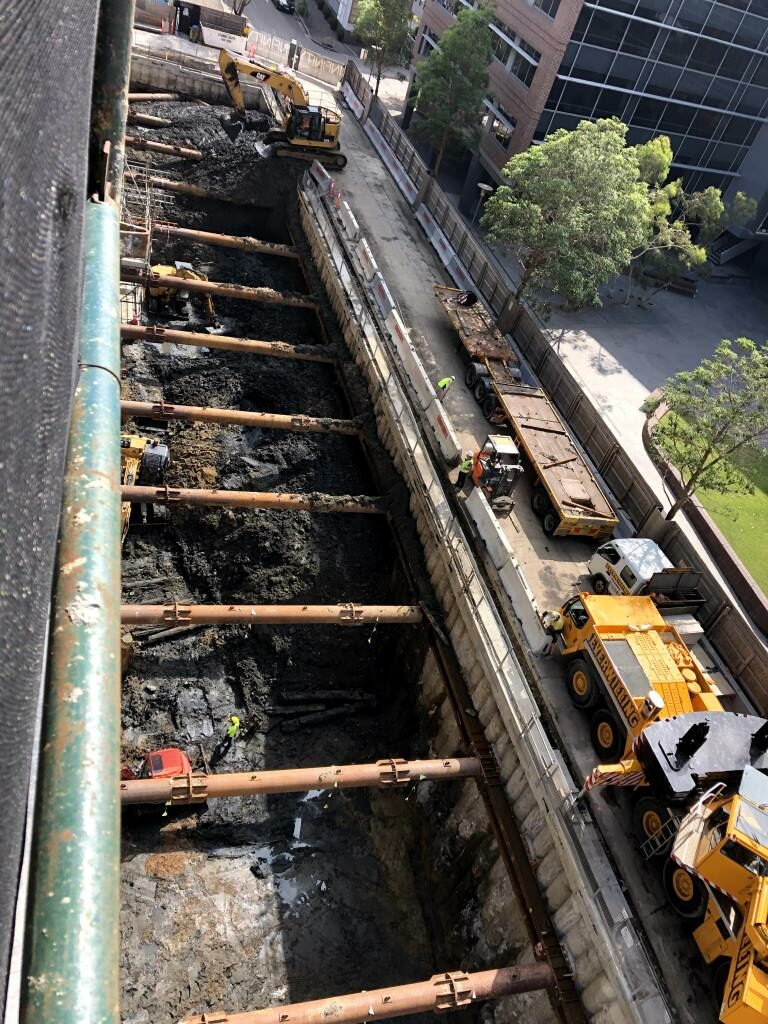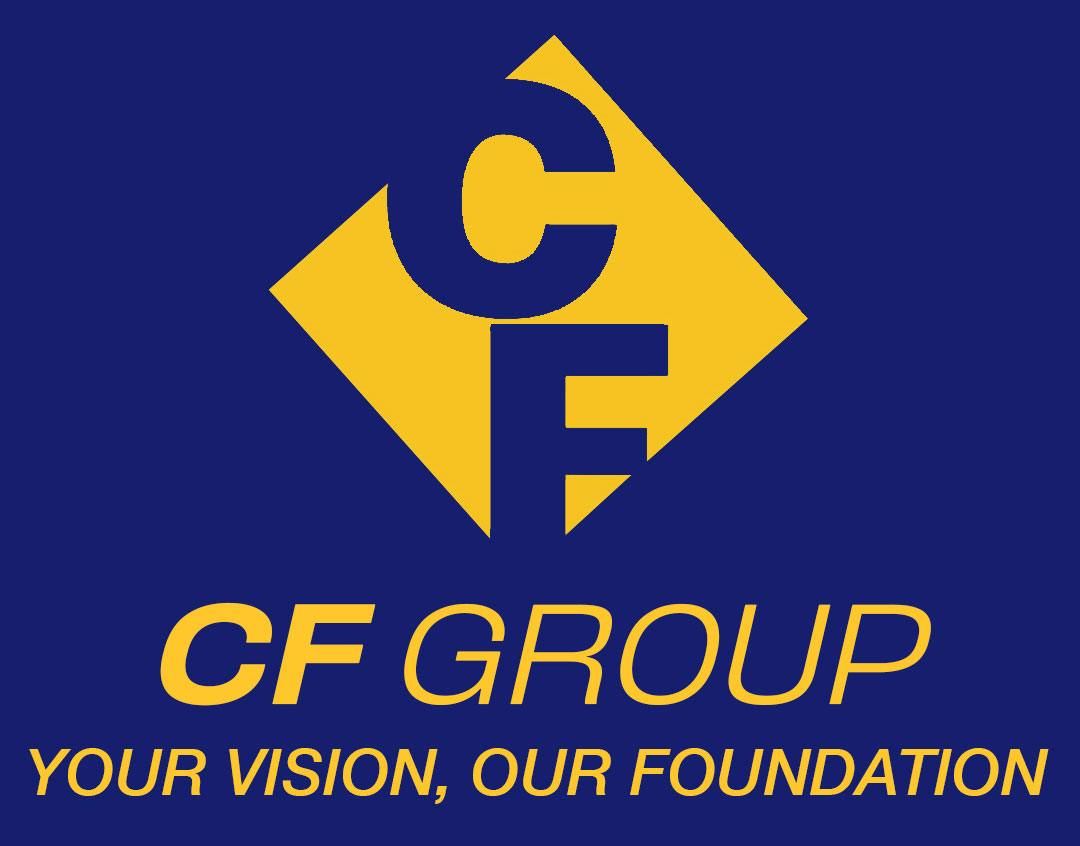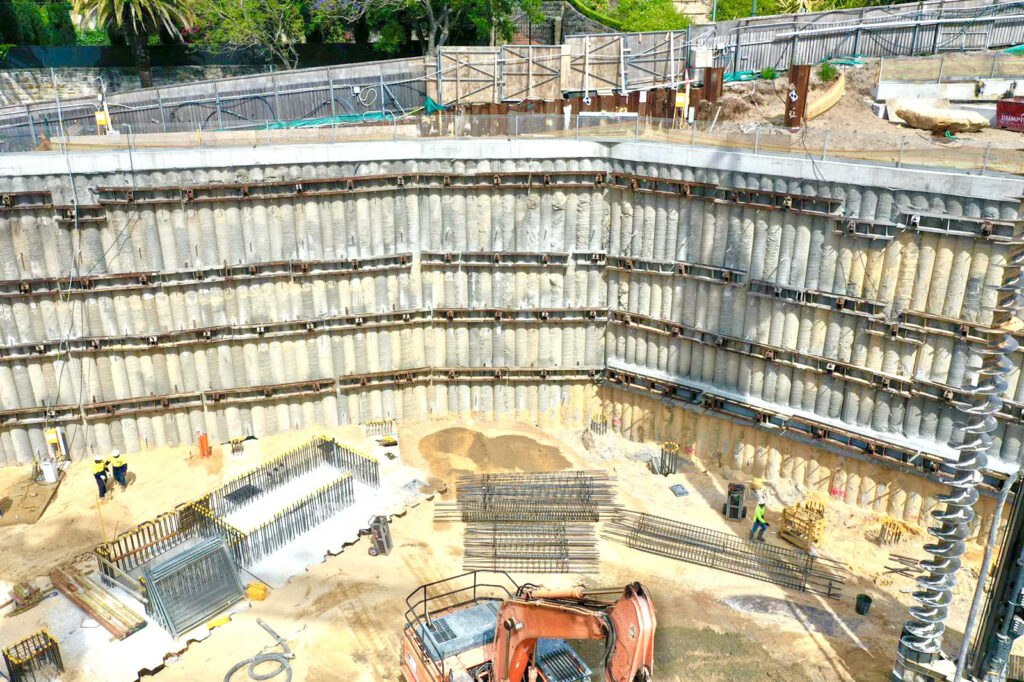The hollow bar ground anchor features a hollow stem, steel tube which has a continuous right-hand thread.
These anchor bars are manufactured in three or four metre lengths, and feature a coupling system that allow additional lengths to be added, allowing for anchors to be installed to any required depth. At the tip of the anchor, a specially designed drill bit penetrates the soil/rock to the required depth, whilst the grout is flushed through.
The grout is flushed through the hollow bar and out of the drill bit as rotation and penetration commences. The grout is continually pumped through the anchor as it penetrates the ground, only stopping when additional 3m lengths of anchor bar are attached. The process continues, with the entire body of grout continually flushing the drill cuttings out of the anchor head. Positive pressure is maintained at all times, which is visible from the grout pouring out of the anchor head.
There are no voids created using this system, which prevents ground settlements that can be problematic using other systems.
The free length is achieved by applying a smooth polyethylene sheath, which prevents any bonding of the grout to the anchor bar. This allows the bar to slide over the free length instead of applying load to the active zone behind the shoring wall.
In self-supporting ground, such as stiff clays or rock, these anchors may be drilled using “air rods”, which use a combination of air and water to remove the drill cuttings to the surface. The anchor bars are then installed and grouted through the drill bit to achieve the required body of grout within the anchor.
The anchor is usually allowed to cure for 7 days prior to stressing. In sandy soils, the curing time may be shortened to 5 days if accelerants are added to the grout.
Strand Anchors are an actively tensioned ground anchor system. Tensioning minimizes or eliminates anticipated deformations of the system and deformations at the civil engineering measure. This applies both to temporary structures and permanent tie backs. The strand anchors are produced with double corrosion protection (DCP): each individual strand is covered by corrosion protection compound and inserted into an individual duct in the factory. As long as the grout used for anchoring is load-bearing, the anchor force is unlimited because the number of strands that can be combined in the anchorage is variable at will.
A Strand anchor consists of three main components:
- Bonded length: The anchor is fixed in the borehole using grout and can transfer the forces to the loadbearing soil via bond and skin friction
- Unbonded length: Each strand is uncoupled from the borehole using individual ducts so that it can freely extend in the unbonded length. This way, tension can be applied to the anchor system
- Anchor head: The anchor head transfers the anchor force to the substructure and therefore to the structure that needs to be anchored
Once the grout has sufficiently hardened, the load bearing capacity of each anchor is tested during a stressing process
For narrow excavations or when ground anchors cannot be installed, internal bracings or struts are most appropriate. Before struts are installed, a horizontal member called waler is placed against the shoring wall. Intermediate struts are then installed from waler to waler across the excavation.










